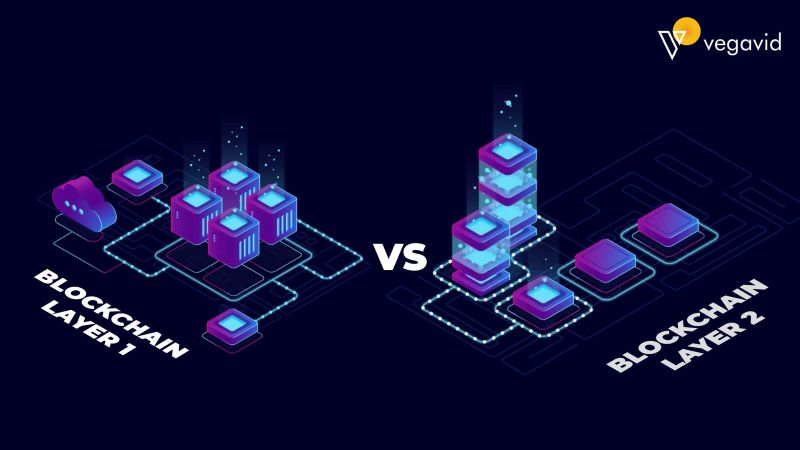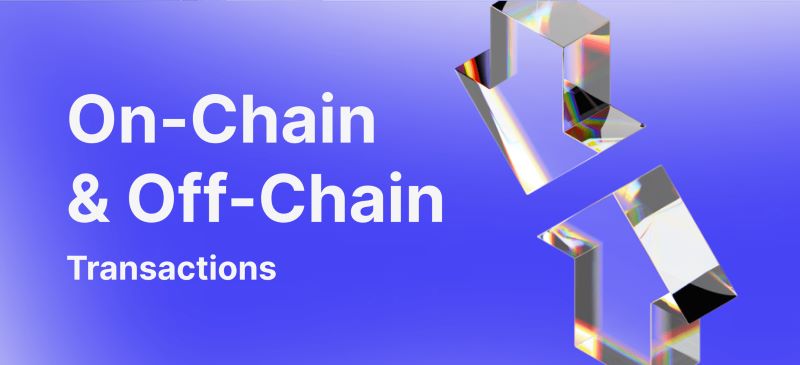Blockchain Smackdown: Layer 1 vs. Layer 2 Decoded
Let’s dive right into the heart of blockchain tech where the real battle is: blockchain layer 1 vs layer 2. I know what you’re thinking – complex terms, heavy tech, yawn, right? Wrong! Imagine layer 1 as the sturdy foundation of a building, where all the basic blockchain magic happens. This is your Bitcoin, your Ethereum – the big names you hear about. But they’ve got issues like slow speeds and high fees, the stuff that can turn excitement into frustration real quick. Then, there’s layer 2, think of it as the smart add-on to that building. It’s built on top of layer 1 to make everything run smooth and fast while keeping costs low. Now, I’ll break it all down for you, no sweat. Stick with me, and get ready to make sense of these layers like a pro.
Diving Deeper into the Blockchain Ecosystem: Layer 1 Overview
Understanding the Base Layer Blockchain and its Challenges
Base layer blockchain is where all the action starts. Think of it as the foundation of a house. Just like a strong house needs a solid foundation, blockchain networks need a tough base layer. It holds all the rules for creating blocks and ensuring every transaction is secure and reliable. This base layer is crucial because it keeps the trust in cryptocurrency layers.
One big problem this base hits is it can get slow. As more people join and use cryptocurrencies, this layer gets packed with data. It’s like a road that gets crowded with more cars, leading to traffic jams. We call this network congestion. When congestion happens, things slow down and using the blockchain becomes costly.
High gas fees are another issue. Gas fees are like a ticket price for making transactions on the network. In busy times, these prices shoot up. It isn’t fair, right? It’s like paying more for popcorn at a crowded movie theater.
But blockchain isn’t all about problems. It’s about solutions too! And these solutions make blockchain really shine.
The Role of Consensus Protocols in Layer 1 Networks
A big deal in the base layer blockchain is the consensus protocols. These are like the rules of a game that everyone agrees to follow. They help decide who gets to add the next block of transactions to the blockchain. And there are different types.
The most known one is Proof of Work. It’s used by the Bitcoin network layers. Think miners digging for gold. Here, miners compete to solve complex puzzles. The first one to solve it gets to add a block. They’re rewarded with new coins for their hard work.
Then there’s Proof of Stake. This is more like a raffle. People lock up some of their coins for a chance to add the next block. It’s more energy-efficient than mining.
But both have issues to tackle. Proof of Work uses a lot of power and can be slow. Proof of Stake is faster, but not everyone gets a fair shot to join in. These challenges stir lots of debates.
Layer 1 networks also try things like sharding. It’s splitting the network into smaller parts to deal with the flood of transactions. It can help, but it’s tricky and not a perfect fix.
In the base layer blockchain, the aim is always to keep things secure but also fast and cheap. That’s where layer 2 solutions come into play. They build on top of the base layer to boost speed and reduce costs without hurting trustless security. Layer 1 enhancements focus on improving what we already have. They’re super important, whether we’re talking about Ethereum upgrades or smarter ways to do smart contract execution.
Together, layer 1 and layer 2 are like a dynamic duo making sure that decentralized applications work great, but there’s always room to grow and get better. That’s the beauty of blockchain — it never stops evolving!
The Emergence of Layer 2 Solutions: Scaling Beyond the Fundamentals
Exploring Off-Chain Scaling Mechanisms
In the world of blockchain, we face a big issue: too many users, too few transactions per second. This is where off-chain scaling steps in. It means taking some work off the main blockchain, or the base layer blockchain. By doing this, we can get more done, quicker, and cheaper. Imagine a busy cafe. If the cafe could serve coffee outside too, more people would get their coffee faster. That’s kind of what off-chain scaling does for blockchains.
Key Layer 2 Technologies: State Channels and Rollups
Now, two cool layer 2 solutions are state channels and rollups. Let’s chat about state channels first. They’re like tabs at a bar. You open a tab (channel), order your drinks (transactions), and only when you’re done, you settle the bill on the mainnet. This saves time and fees because you only hit the main network twice, to open and close the tab.
Then, there are rollups. Think of them as bundling up lots of little transactions into one big package before they are added to the base layer blockchain. They roll up the data, which makes everything faster and cheaper than doing each transaction one-by-one on the main blockchain. This boosts transaction throughput a lot!
Both these technologies help with network congestion, making the blockchain ready for lots of users and decentralized applications (dApps). They’re also part of the latest Ethereum upgrades aiming to make everything smoother and better for everyone, not just the techy folks.
So, off-chain scaling with state channels and rollups makes our blockchain cafe serve more customers, better coffee, faster, and without buying a bigger coffee machine! This is how we scale beyond the blockchain fundamentals.
Bridging Layers for Optimal Performance: On-Chain vs Off-Chain Dynamics
Comparing Sidechains and Plasma Solutions to Mainnet Enhancements
Let’s chat about a cool tool in blockchain called “sidechains.” Sidechains are like extra lanes in a busy road. They help more cars drive fast, without getting stuck behind each other. They do this for blockchain too. They let transactions happen on a separate blockchain that’s connected to the base layer blockchain. This can make things quicker and cheaper.
“Plasma solutions” are another smart way to handle lots of transactions. Think of them like magic buses that can carry lots of people at once, cutting down traffic in the city. Plasma takes many little transactions, packs them up, and then puts them as one big transaction on the blockchain. This means we can do loads of things without clogging up the main blockchain, keeping it running smooth even when it gets super busy.
Both these tools, sidechains and plasma, help the blockchain mainnet. They make it better by letting it handle more stuff without slowing down. They’re like helpers that let the mainnet stay fast and strong.
Integrating Layer 2 Advancements for Transaction Throughput and Network Congestion Relief
Now, let’s dive into some cool tech called “layer 2 solutions.” These are special tweaks made to help blockchains do a lot more work without getting all clogged up. They handle transactions away from the mainnet, kind of like taking a shortcut to avoid traffic, then report back once the job’s done.
The big win with these advances is that they help everyone use blockchain without waiting forever or paying too much. It’s like having a super speedy checkout lane at the grocery store: get in, grab what you need, and get out quick!
“Transaction throughput” is a fancy term for how many transactions a blockchain can handle at once. With layer 2 solutions, we can squeeze in way more transactions per second. It’s like opening up a hundred more cash registers at the store during a big sale – super quick and efficient!
Layer 2 also eases “network congestion.” When too many people try to use the blockchain at once, things can get stuck. Imagine a huge crowd trying to cram through a single door – it’s a mess! Layer 2 helps by making more doors, so the crowd can spread out and everyone gets where they’re going without a shove.
All these nifty layer 2 ideas, like “state channels,” “rollups,” and the “Lightning Network,” help the Bitcoin network layers and other blockchains move like lightning. They let us do all our blockchain chores, like sending money and playing games, without pulling our hair out over slow transactions or sky-high gas fees.
In the end, it’s like having best friends in school who help carry your heavy books so you can all get to class on time, with no sweat! Layer 2’s helping hand makes blockchain way better for everyone.
The Future of Blockchain Interoperability and Decentralized Applications
Leveraging Zero-Knowledge Proofs for Enhanced Privacy and Scalability
So, what’s all the fuss about zero-knowledge proofs (ZKPs)? In simple terms, ZKPs let one party prove to another they know something without revealing the actual information. This is a big deal for blockchain. It boosts privacy and helps with a big problem: scaling.
Imagine you want to keep your transactions private. But, you still want everyone to know the rules were followed. ZKPs are the secret sauce for this. They let us do more complex things on the blockchain. Without ZKPs, we’d be stuck with slower and less private transactions.
Now, think bigger. Blockchains can get slow when too many people use them. This happens a lot with popular blockchains like Ethereum. Here comes ZKPs to save the day again! They can pack a lot of transaction info into a tiny proof. This means we can move a lot of the work off the main blockchain. It’s like helping a busy highway by building a super-fast bike lane alongside it.
So to answer, “What role do ZKPs play in blockchain scalability?” They play the role of a game-changer, driving privacy and scalability in the blockchain world.
Ethereum Upgrades and DeFi Scaling Strategies: Preparing for a Cross-Chain World
Let’s move to Ethereum now. You’ve probably heard it’s had a few upgrades, right? These upgrades are like a superhero training montage. Ethereum is getting faster, stronger, and ready to handle more action.
These upgrades are part of Ethereum’s journey to Ethereum 2.0. It’s a big leap from proof of work to proof of stake. This change makes things more energy-efficient and sets the stage for even more transactions per second.
But why does this matter for DeFi, you ask? DeFi stands for decentralized finance. It’s like the wild west of finance on the blockchain. And just like a growing town, DeFi needs solid roads and infrastructure to expand. Ethereum’s upgrades are laying down these roads. They make sure that as DeFi grows, it won’t be slowed down by traffic jams on the blockchain.
The upgrades also help with what we call ‘cross-chain communication’. That’s a fancy way of saying blockchains talking to each other. It’s important because in the future, we want blockchains to work together smoothly. Like pen pals from different countries becoming best friends!
Now, as DeFi strategies evolve, they’re also using layer 2 solutions. Imagine a second-layer blockchain sitting on top of Ethereum. This layer helps by handling a bunch of the transactions. Doing this, it lets Ethereum focus on the big stuff, like keeping the network secure.
DeFi on Ethereum is shooting for the stars, but it needs to be able to handle the space traffic. That’s where Ethereum upgrades and savvy DeFi strategies come into play. Together, they’re preparing for a world where blockchains work in harmony. Like a well-rehearsed orchestra, each section plays its part to create a symphony of decentralized apps that are quick, efficient, and secure.
We dove into blockchain’s layers, from base tech to exciting new updates. We started with Layer 1, exploring its roots and the tricky parts. Consensus protocols keep it secure and humming. Then, we looked at Layer 2 solutions. They take the load off with smart tech like state channels and rollups.
Beyond single layers, we saw how sidechains and plasma mix with Layer 1 for better speed and less jamming in the network. We wrapped up peeking into the future, where tricks like zero-knowledge proofs and big Ethereum updates promise a world where blockchains talk to each other smoothly.
In closing, blockchain isn’t just tech talk; it’s shaping a world where we trade and interact faster and safer. Thanks to folks working on both Layer 1 and Layer 2, this techie dream is growing roots in real life. Watch this space – it’s about to get super exciting!
Q&A :
What is the difference between blockchain Layer 1 and Layer 2?
The main difference between Layer 1 and Layer 2 blockchain solutions lies in how they scale and process transactions. Layer 1 refers to the underlying main blockchain architecture (such as Bitcoin or Ethereum), and changes or scalability solutions are implemented directly onto the Layer 1 blockchain itself, often through hard forks or protocol changes. In contrast, Layer 2 solutions are built on top of the Layer 1 blockchain, with the aim of increasing transaction speed and efficiency. Layer 2 solutions, such as Lightning Network for Bitcoin or Plasma and Rollups for Ethereum, enable off-chain transaction handling to alleviate the strain on the main blockchain.
How do Layer 2 solutions improve upon Layer 1 blockchain?
Layer 2 solutions enhance Layer 1 blockchain by handling transactions off the main chain, which reduces congestion and increases transaction speeds. This is achieved by creating a secondary framework or protocol that sits on top of the main blockchain. These solutions include state channels, sidechains, and rollups. By processing transactions off the main chain and periodically batching and finalizing the transaction results on Layer 1, Layer 2 solutions can significantly decrease transaction fees and enhance the overall scalability of the blockchain.
Can Layer 1 and Layer 2 solutions work together?
Yes, Layer 1 and Layer 2 solutions are designed to work together to address the scalability, speed, and efficiency challenges faced by blockchain networks. Layer 1 provides the foundational security and decentralization, while Layer 2 adds additional capacity and features without compromising the underlying blockchain’s integrity. Together, they provide a complementary ecosystem where the robustness of Layer 1 is augmented by the scalability solutions brought by Layer 2.
What are some examples of Layer 1 and Layer 2 blockchain technologies?
Examples of Layer 1 blockchain technologies include networks like Bitcoin, Ethereum, and Binance Smart Chain, which provide the main infrastructure for cryptocurrencies and decentralized applications. Examples of Layer 2 technologies are varied depending on the Layer 1 blockchain they supplement. For Ethereum, popular Layer 2 solutions include Optimistic Rollups, zk-Rollups, and Polygon. For Bitcoin, the Lightning Network is a prominent Layer 2 solution. Each Layer 2 technology aims to bypass the limitations of its associated Layer 1 blockchain in terms of transaction throughput, speed, and cost.
What happens to the security of transactions on Layer 2 solutions?
Security is a paramount concern for both Layer 1 and Layer 2 solutions; however, Layer 2 solutions must rely on the underlying Layer 1 blockchain for their ultimate security guarantees. Although Layer 2 solutions handle transactions off the main chain and might use their own security measures such as fraud proofs or economic guarantees to secure transactions, they periodically settle transactions back to the Layer 1 blockchain, leveraging its established consensus mechanisms and security. Thus, while Layer 2 can introduce additional security considerations and trade-offs, the finality and security of transactions still anchor in the Layer 1 blockchain’s inherent security protocols.





